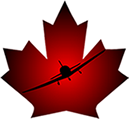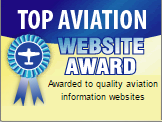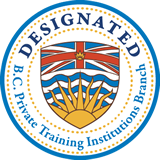 |
|
Landing: Part IV, Touchdown“There is a chord in every heart that has a sigh in it if touched aright.”--Ouida-- In the last couple of months, we have taken a look at the first stages of the landing process: the approach, the visual information flow affecting our performance as a pilot, and the flair. With the flair, we’ve brought ourselves down to inches above the landing surface: the moment when the aircraft’s wheels touch. This is the moment! We are, however, still in flight; we can still change our mind and abort the landing should that be necessary. We are in control of the aircraft, have power available, if necessary; we are not a victim of this moment; let’s always keep that firmly in mind. If all is going well, we can choose to allow the aircraft to make contact with the surface. The essential function of the flair, the manoeuvre immediately preceding touchdown, is to give the aircraft time for its speed and kinetic energy to decay sufficiently to allow safe contact with the landing surface. Generally speaking, we always choose to make contact with the ground, that unforgiving surface, at as slow an airspeed as possible, consistent with safety in the prevailing conditions. Rushing through the flair phase of the landing process is not an excellent plan. Touching down with excess speed, excess kinetic energy, can potentially lead to several potentially exciting and expensive adventures. We want to transition from flight to parked as gently and seamlessly as possible. Take your time; patience is a great virtue. There are a number of factors to be alert for and correct, as necessary, prior to allowing an aircraft to touch the landing surface. The longitudinal axis of the machine must be lined up with the axis of our landing path. Our primary method of directing the aircraft’s longitudinal axis is appropriate rudder input. Remember, when you fly an aircraft with side-by-side seating, you sit on a line parallel with the aircraft’s longitudinal axis rather than directly on top of it. Many ab initio students make the simple error of sighting across the centre of the cowling or across the spinner as they attempt to manoeuvre the aircraft straight down the runway and end up touching down with the aircraft aligned five to ten degrees left of the axis of landing. If you think of the centre of your breastbone and the control yoke’s shaft as defining the longitudinal axis, it will make your perceptual task much simpler. Crosswind drift must be compensated for so the aircraft’s flight path is also aligned with the axis of landing. We do not want the wheels to touch the landing surface while the aircraft is drifting sideways in relation to the axis of landing. Our primary method of dealing with crosswind drift is appropriate aileron input coupled with appropriate rudder input to prevent inducing a turn. The typical error for pilots of all experience levels is to neutralize aileron input and level the wings immediately prior to touchdown. If there is any crosswind blowing, the moment we remove compensatory aileron input, the wind begins to work its way with the aircraft and drift across the axis of landing begins. The lighter the aircraft, the more quickly it will respond to the effects of crosswind drift. For a light aircraft, say a J-3 Cub with a gross weight of 1200 pounds flying in a 15 mph. crosswind, within 6 seconds following the removal of crosswind compensation the aircraft will have picked up 7 mph. of sideways drift (1). This condition is neither desirable nor safe and can, potentially, lead to disaster. Keep in mind, as well, a change in one control input alters how the other inputs affect the aircraft’s flight path and orientation. In a crosswind situation, if I increase aileron input, I must compensate for the aircraft’s now increased urge to turn by increasing opposite rudder input to maintain longitudinal alignment. So here we are, inches above the landing surface, compensated for crosswind and gusts, ready to allow the wheels to make ground contact. The specific type of landing we have chosen will dictate just how we proceed. For simplicity, however, let’s stick to the normal landing. With a tricycle gear aircraft, we would like to touch down on the main gear in a slightly nose-high attitude at as slow an airspeed as possible consistent with ambient conditions. In still air it would be very nice to hear that stall warning sounding in the background. If the wind is a bit more brisk or gusty, if there is some crosswind component to be accommodated, or we are operating in poor light conditions—at night, for example—a bit faster touchdown is a better bet. We must maintain positive control of the aircraft throughout the touchdown and subsequent landing roll. Until the wheels are in firm contact with the ground, we depend on rudder, aileron and elevator inputs to give us positive control; control surfaces depend on airflow generated by airspeed for their authority. When the Cessna Aircraft Corporation first came out with their delightful, little training aircraft, the Cessna 150, in September 1958, it was advertised as having “Land-O-Matic” landing gear. How could a person possibly go wrong with that? The significant bonus obtained by the change from conventional gear aircraft, commonly referred to as a taildragger, to tricycle gear aircraft was the positioning of the centre of gravity ahead of the main landing gear. This results in the aircraft having a built-in propensity to track straight and keep its front end toward the direction of travel. It helps us a great deal when landing by reducing tendencies to ground loop, that sad state of affairs when the aft end of the aircraft tries to overtake the front end at an increasingly rapid rate. Tricycle gear aircraft are not entirely immune to ground looping; they are just much less likely to initiate one than a conventional gear aircraft. It is still critical, however, to ensure the aircraft is properly aligned with the axis of landing and that all sideways drift has been eliminated before allowing the wheels to touch. With a conventional gear aircraft, alignment and elimination of cross drift is absolutely critical. The conventional landing gear configuration with the centre of gravity aft of the main landing gear leaves the aircraft very vulnerable to ground looping if the pilot gets at all casual with eliminating drift or has not aligned the aircraft with the landing axis. With both tricycle and conventional gear aircraft, compensation for crosswind results in initially touching down on the windward main wheel. Once the aircraft has made contact with the landing surface, its speed will decay rapidly as a result of friction with the surface. The leeward main wheel will soon make contact with the ground so there is no need to fear the one-wheel touchdown. Just keep flying the machine until it is done. Once both main wheels have contacted the ground with a tricycle gear aircraft, we continue to hold the nose wheel off the ground as the aircraft slows. It will come down of its own accord once speed has decayed sufficiently. Holding if off the surface as long as practicable, consistent with safety, helps slow us down—high angle of attack = high drag—and reduces the impact loading on the vulnerable nose gear resulting from its contact with the surface. With a conventional gear aircraft, we have some options on touchdown. We can choose to execute a three point, a touchdown where all three wheels make contact with the surface simultaneously, one main wheel and the tail wheel in crosswind conditions, or we can choose a wheel landing where we make contact with the ground on the main wheels alone, windward wheel first in the case of crosswind condition. The ongoing discussion on whether a three point or a wheel landing, either tail high or tail low, is the best choice continues so I won’t venture into that morass. I would simply say that both types of landings have their application and it is in a pilot’s interest to be current and competent in executing both types so he or she can make an intelligent choice for the given conditions and the specific aircraft he or she is operating. Some tailwheel aircraft seem to respond very well to one type of touchdown and not quite so well to the other, depending on conditions. My spray pilot friends are adamant that wheel landings, particularly in crosswind conditions, are the only safe way to go. I find my little Citabria, which is quite tail heavy, responds well to the three point technique, particularly if a shorter landing-roll is of benefit although it will wheel land quite nicely. I make a conscious effort to remain current on both types of touchdown so my options are open. There is no benefit I can see from becoming dogmatic on the subject. As they say, an aircraft is quite safe as long as it remains in the middle of the air. It is at the edges of the air that difficulties often arise. The touchdown phase of the landing process is an extremely critical moment and deserves all the attention and focus we can give it. Learning to execute the touchdown with skill and patience so the transfer of the aircraft’s weight from its wings to its wheels is accomplished as gently and smoothly as possible is a very important step in the process of becoming a proficient and safe pilot. Notes:
|


